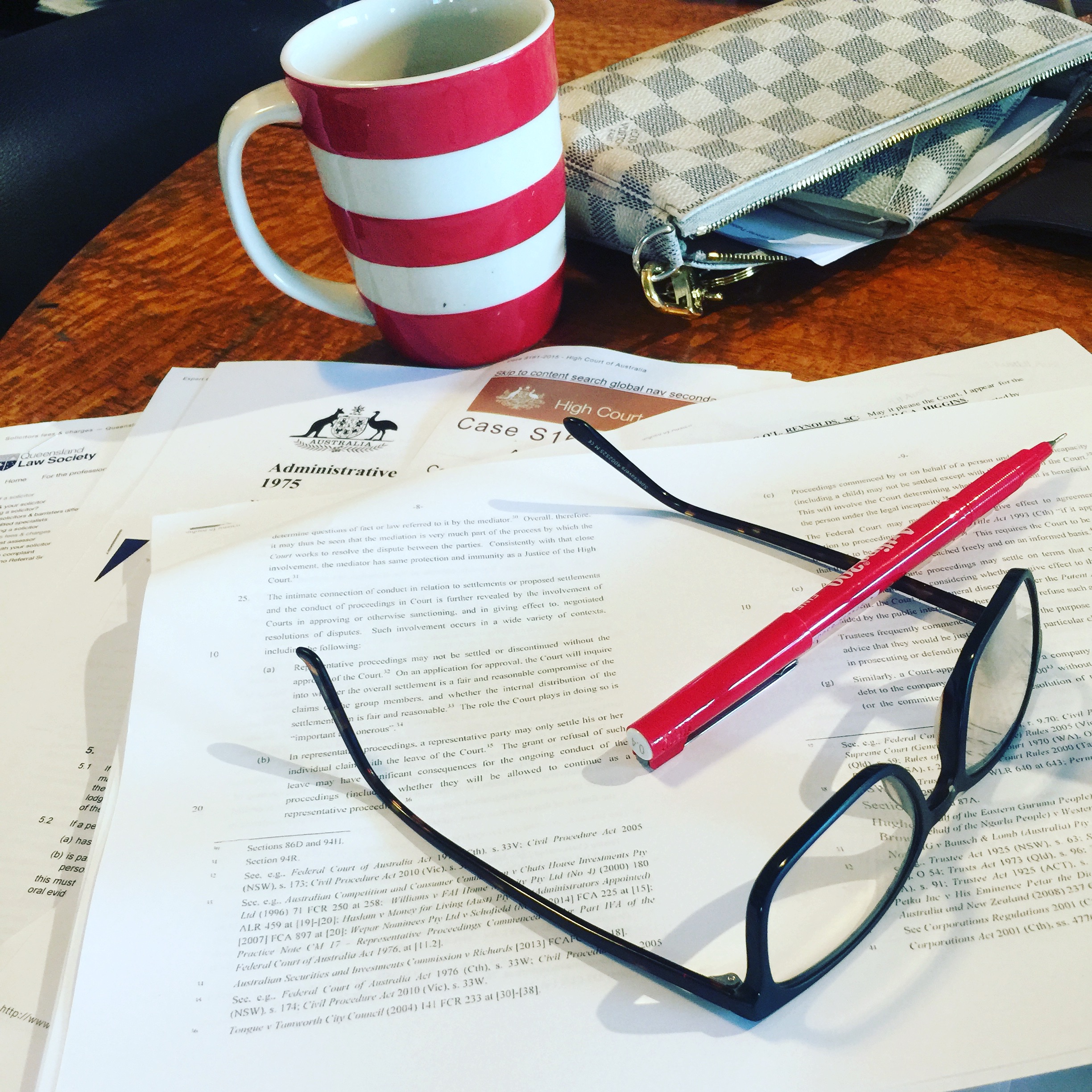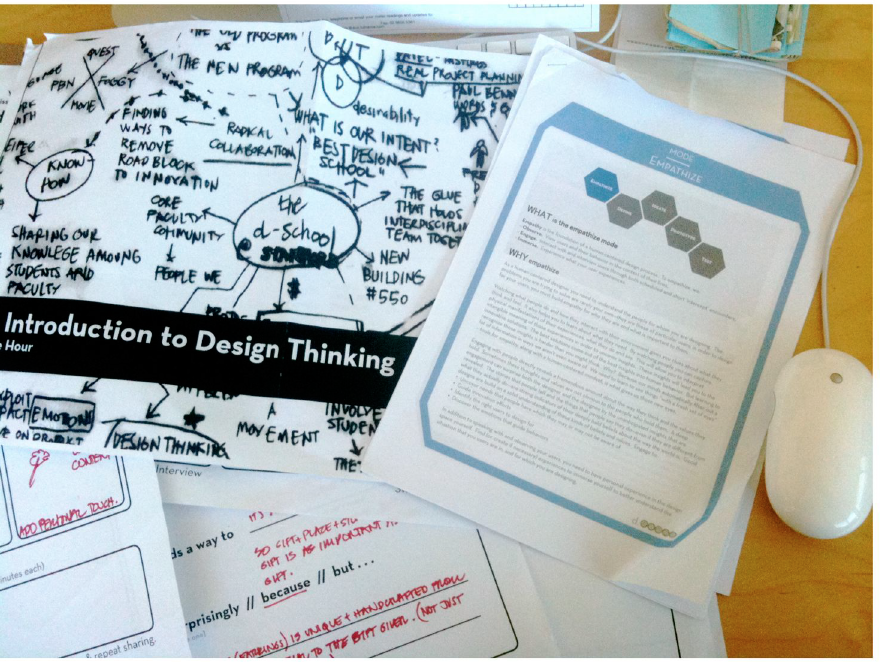Brand + Business x Christine Moody*

It has been a big year for me: published my first book; helped published a second book (and wrote a chapter for it); and commenced at QUT Law School. And I never stop learning! In my book, Designer Law School: Legal lessons for design entrepreneurs, I dedicate an entire chapter to understanding intellectual property (Lesson 6). Below is an adapted excerpt of this chapter as IP is one of the most misunderstood business assets.
Lesson 6: Understand Your Intellectual Property Issues
The intellectual property (IP) issue is particularly important to our work as designers. However, understanding the area is both simple and complex: simple in that there is so much information available on the subject (The IP Australia website is an excellent start); and complex because of the difficulty in understanding the difference between the different classes within IP, and the difference between IP, trade marks, and copyright.
The following section, presented from my position as a designer working in the brand space, provides you with the necessary general information on the subject. As already emphasised, however, each case is different, and it is critical that you seek legal advice from a specialist IP lawyer. Prior to registration, you will also need to talk to your accountant (and your clients) to determine which entity will own the trade mark.
Common types of IP
The most common type of IP issue you are likely to come across is the registration of your organisation’s brand identity or logo, or your clients’ brand identities or logos. When you develop a logo, it is trade marked; however, registration is its best protection.
There are important details that need to be thought about and discussed with your advisors before you rush into designing a logo. It is also important to discuss and think about the short- and long-term plans for a brand before you design a logo as these plans affect the design process as well as the lodgement and other fees. For example, each lodgement in a different IP class is an additional fee.
The trade mark confirmation process is a lengthy one so it is important to think practically and only register in classes that you truly think you will operate in the near future. The same goes for the choice of countries where you wish to protect a logo as registration in each country, and maintaining that registration there, is expensive.
At the initial meeting/s with your client, you need to ask questions about their business and legal structure as this will have consequences for both the registration timing and cost. It will also have consequences for the way in which the trade mark is considered; in other words, what trade mark product and service classes are best suited to their current and future business? It is also worth knowing early on who is going to be responsible for the trade mark process; for example, your client’s in-house legal counsel, or an external lawyer? Work with this legal representative as soon as possible in the pre-naming and pre-design stages of logo development (that is, the name style and symbol) that will form the trade mark. This will save a lot of future heartache for your client—and you!
…the process of registering the trade mark is not a straightforward one, but it is an important part of the process of ensuring the value of their brand identity…
A client also needs to understand that while the process of registering the trade mark is not a straightforward one, but it is an important part of the process of ensuring the value of their brand identity. Failure to register a brand identity/logo can delay the sale of a business. On several occasions, I have witnessed a client in too much of a rush to apply and wait for their trade mark registration; they have either not bothered to register or have had their trade mark rejected when they did. This can result in delays in the process of the sale because the new owner wants to have the security of a registered trade mark.
Who owns the IP?
A client often expects to own everything you do on their project—from initial sketches to digital files. They are often mistaken in thinking that they own the work outright because they have paid for it to be done. This is not the case. If you want to retain any IP in your work (personally, for example, I ensure that I own all the concepts right up to the final design), you will need to discuss this with your client. Client relationships can be ruined as the result of misunderstandings over IP ownership. I have witnessed this first hand.
Before commencing a project, you need to know what the client’s intention for your work is, and ensure that your project expectations and scope aligns with the client’s requirements with respect to IP. If you have discussed a certain requirement—for example, that you own all the concepts leading up to the approved final design—ensure that this agreement is included in the contract. If you have spoken about a specific inclusion but it is not included, hand-write it into the documentation, and sign this addition.
If you decide to transfer your copyright to a client, be clear about what you are transferring, and make sure that you will be happy with that decision in both the short- and long- term. If the paperwork for the transfer is provided by your client, you will need to have it checked. If you provide the paperwork—which I suggest you do—it is worthwhile creating a standard form for this purpose. Ensure that this form is prepared by an IP lawyer (especially if the matter or project is a complicated one) and that it is reviewed on a regular basis. Having standard documentation means that you will be able to adjust and include specific items if, and as needed.
Understand your IP issues
- Know the different classes within IP
- Understand the difference between IP, trade mark, and copyright
- Seek legal and financial advice around IP issues
- Discuss, decide, and document IP ownership for each project
- Understand the IP requirements and/or ownership of your work as an employee or independent contractor
- Beware the pitfalls of third party IP
- Factor the cost of a project’s legal IP work into your fee structure.
Excerpt from Designer Law School: Legal lessons for design entrepreneurs. First published by Brand Audits Pty Ltd a Trustee for Red Discretionary Trust ABN 26 515 247 341 Australia. Copyright © Christine Jane Moody 2016. All rights reserved, No part of this publication may be reproduced, stored in a retrieval system, or transmitted in any form or by any means, electronic, mechanical, photocopying, recording or otherwise, without the prior written permission of the publisher.
Review on Amazon.com by Dorie Clark, author of Stand Out and Reinventing You, and adjuct professor, Duke University’s Fuqua School of Business.
Christine Moody is one of Australia’s leading brand strategists. She is the founder of brand management consultancy, Brand Audits, and several successful start-up companies. Designer Law School is her latest venture. This book is a cautionary tale for all designers, entrepreneurs, managers, and educators. With the wit and wisdom born of long experience (and some pretty hard knocks along the way), Christine encourages her fellow designers (and all designers, creatives, and entrepreneurs, for that matter) to respect and understand the legal issues that affect their daily business. In a series of practical ‘lessons’ full of ‘good-to-know’ tips and topics, the book alerts others to the risks of ‘doing business’ without a keen eye on the possible legal pitfalls along the way. At the same time, Christine engages the reader through her obvious care and concern for their challenges, and encases her ‘lessons’ in the motivational framework of her personal struggle for justice and survival.
*Christine Moody is one of Australia’s leading brand strategists and the founder brand management consultancy, Brand Audits. With more than 30 years’ professional experience, Christine has helped a diverse client base of local and international brands, including Gold Coast City Council, Hilton Hotels and Wrigleys USA, to develop, protect and achieve brand differentiation. Her particular interest is personal brand audits to assist executives realise their full potential. She is also an author and a law student.
For more information: chris.moody@brandaudits.com.au or +61 419 888 468.
…………………………………………….
About—Designer Law School. Legal lessons for design entrepreneurs
(Stockists Folio Books: Folio@FolioBooks.com.au; iBook store; and Amazon)
Christine Moody is one of Australia’s leading brand strategists. She is the founder of brand management consultancy, Brand Audits, and several successful start-up companies. Designer Law School is her latest venture.
This book is a cautionary tale for all designers, entrepreneurs, managers and educators. With the wit and wisdom born of long experience (and some pretty hard knocks along the way), Christine encourages her fellow designers (and all designers, creatives and entrepreneurs, for that matter) to respect and understand the legal issues that affect their daily business. In a series of practical ‘lessons’ full of ‘good-to-know’ tips and topics, the book alerts others to the risks of ‘doing business’ without a keen eye on the possible legal pitfalls along the way. At the same time, Christine engages the reader through her obvious care and concern for their challenges and encases her ‘lessons’ in the motivational framework of her personal struggle for justice and survival.








